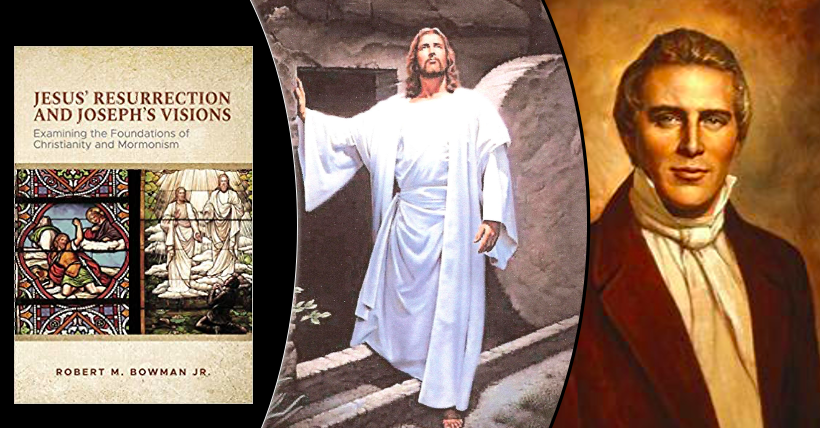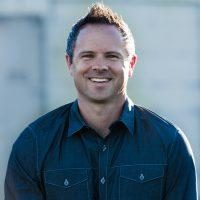My friend Rob Bowmanhas written a fascinating new book in which he compares the historical evidence for the First Vision of Joseph Smith with the historical evidence for the Resurrection of Jesus. Anyone interested in apologetics and/or comparative religion (and specifically the Church of Jesus Christ of Latter-day Saints) needs to get this book. I enthusiastically endorsed it and hope you will consider picking up a copy. But first, check out this brief interview with Dr. Bowman:
SEAN MCDOWELL: How did you come up with the idea to compare the historical evidence of the resurrection of Jesus with the first vision of Joseph Smith?
ROBERT BOWMAN: I first got the idea from Mormons, actually. Frequently, when I would be discussing the evidence against Joseph’s first vision, Mormons would respond by trying to argue that the problems I was bringing up were paralleled by problems with the Resurrection appearances, and especially with the Resurrection appearance to Paul. In a way, what I’m doing in this book is taking that argument very seriously—and then taking it apart by a close examination of the evidence in both cases.
MCDOWELL: Why do you find the evidence for the resurrection of Jesus so convincing?
BOWMAN: What I find most compelling is the way the evidence for the empty tomb and for the appearances work together. They come together like the two blades in a pair of scissors. Both blades work and can cut, but it’s when they work together that the cutting really happens. Likewise, both the evidence for the empty tomb and the evidence for Jesus’ appearances can be viewed separately as good evidence for the Resurrection, but it’s also possible to explain each of them away if you ignore the other. For example, if we had only an empty tomb we would think the tomb was robbed; if we had only appearances we would think the visionaries had delusions. This is why you find a majority of skeptical scholars conceding one or the other, but not both, lines of evidence. Put the empty tomb and the appearances together, and the only credible explanation is that Jesus really did rise from the dead.
MCDOWELL: Why are you skeptical of the account of the First Vision?
BOWMAN: Since Joseph Smith would have been the only human witness to the First Vision, if it happened, the only way we can test his account directly is by examining the evidence for the public events that Joseph claimed happened before and after his vision. Joseph claimed that he received his vision in the spring of 1820—which was exactly 200 years ago—when he prayed to know which church to join after a major revival that started where he lived and sparked his concern to find the right church. The details that he and his associates gave about that revival closely match a revival that did take place but that we know from documentary evidence happened in 1824, a full four years after the vision supposedly occurred. Joseph also claimed that very shortly after his vision and for many years afterward, he was constantly persecuted by people of all the churches for telling people about his vision. However, there was no such persecution, and in fact no one even knew about the vision until more than a decade had passed. The people in Joseph’s home town were indeed highly critical of him, but not for any story of seeing God or Christ when he was a boy. So the historical setting in which Joseph claimed the First Vision took place is impossible, and the persecution he says he experienced after the First Vision simply did not happen. These are strong reasons to consider Joseph’s whole account historically unreliable.
MCDOWELL: What are the top two ways Mormon scholars defend the First Vision? And what are your responses?
BOWMAN: First, Mormon scholars have tried to defend Joseph’s claim that his vision took place in the context of a local revival. Some have argued that the revival described by Joseph took place in 1818, two years before the vision. Others have pointed to evidence of revivals occurring in nearby towns during 1819 or 1820. These defenses fail because Joseph, his mother, his brother, and his scribe all gave specific information about the revival that dovetail precisely with just one such revival, the one that took place in 1824 starting with the Methodists in Palmyra and Manchester, the two towns on either side of Joseph’s boyhood home.
Second, Mormon scholars have often tried to argue that the problems with Joseph’s vision are no different than the problems with Paul’s vision of Christ on the road to Damascus. For example, to the point about the earliest written references to Joseph’s vision dating more than a decade after it supposedly happened, Mormons point out that our earliest written references to Paul’s vision come from his epistles, some twenty or so years after the event. This argument really misses the point, which is that Joseph claimed that he was publicly persecuted by all the churches because of his vision throughout the period leading up to his first written account. Even Mormon historians have had to admit that few people, if anyone at all, even knew about the First Vision in the 1820s, which means of course that people were not persecuting Joseph for it during that time.
MCDOWELL: If you had to guess, what is your best explanation for what really happened to Joseph Smith in the woods?
BOWMAN: There are two schools of thought on this question among serious researchers outside the LDS movement. One opinion is that Joseph had some sort of religious experience in or around 1820, perhaps something like what we might call a born-again experience, that was about his seeking forgiveness of his sins from God, and that years later he embellished that experience in several tellings until it became the First Vision story. The other opinion is that nothing religiously significant happened to Joseph in 1820, although he may have gone through some intense religious struggle or seeking during the revival in 1824. This is the position I think is more likely to be correct. After he had founded the LDS Church in 1830, Joseph was anxious to answer the criticism that in his youth he had not been especially religious but had instead been a fortune hunter who claimed to be able to find buried treasure using a magical stone. His answer was to create the story of the First Vision and date it to a couple of years before he began his treasure hunting activities. In either case, the evidence rather clearly shows that the First Vision did not happen.
Get a copy of Jesus’ Resurrection and Joseph’s Visionhere.
If you are interested in examining the evidence for the resurrection further, consider joining me and Lee Strobel for a live discussion on YouTube on Tuesday, 4-5pm PST, on my YouTube channel (Dr. Sean McDowell).

